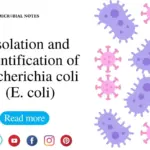Introduction
Antibiotic susceptibility testing (AST) also known as antibiotic sensitivity test is a laboratory technique used to determine the effectiveness of an antibiotic against a bacterial pathogen isolated from a patient’s specimen. It is an essential tool in the management of infectious diseases as it enables clinicians to prescribe appropriate antibiotics based on the susceptibility pattern of the causative organism.
Importance of Antibiotic Susceptibility Test
Antibiotic susceptibility testing is crucial in the management of bacterial infections. It helps clinicians in selecting the most effective antibiotic therapy, thereby improving patient outcomes. Inappropriate use of antibiotics can lead to the development of antibiotic resistance, which is a major public health concern. Therefore, antibiotic susceptibility testing is an essential tool in the prevention and control of antibiotic resistance.
Brief History of Antibiotic Susceptibility Test
The first antibiotic, penicillin, was discovered in 1928 by Alexander Fleming. However, it was not until the 1940s that the use of antibiotics became widespread in clinical practice. In 1946, Kirby and Bauer developed the disk diffusion method, which is still one of the most commonly used methods for antibiotic susceptibility testing.
The method involves placing antibiotic disks on a culture plate and measuring the zone of inhibition around the disk. The size of the zone is an indicator of the susceptibility of the bacteria to the antibiotic. Over the years, different methods have been developed for antibiotic susceptibility testing, including the broth microdilution method, the E-test, and automated systems. These methods have improved the accuracy and speed of antibiotic susceptibility testing.
Understanding Antibiotic Resistance
Antibiotic resistance is a major public health threat, causing the failure of antibiotic therapy and an increase in morbidity, mortality, and healthcare costs. Understanding antibiotic resistance is essential for the effective management of infectious diseases.
Definition of Antibiotic Resistance
Antibiotic resistance is the ability of bacteria to survive and grow in the presence of antibiotics that were previously effective in killing them. It occurs when bacteria undergo genetic changes that enable them to resist the action of antibiotics. Antibiotic resistance can develop through several mechanisms, including mutation and the transfer of resistance genes between bacteria.
Causes of Antibiotic Resistance
Antibiotic resistance is caused by the overuse and misuse of antibiotics. When antibiotics are prescribed unnecessarily or used inappropriately, bacteria are exposed to suboptimal concentrations of antibiotics, which promotes the selection of resistant strains. Antibiotic resistance can also develop through the transmission of resistant bacteria between humans, animals, and the environment. Factors such as poor infection control, lack of access to clean water and sanitation, and the use of antibiotics in agriculture and animal husbandry can also contribute to the development of antibiotic resistance.
Methods of Antibiotic susceptibility testing
Antibiotic susceptibility testing (AST) is an important tool used to determine the susceptibility of microorganisms to different antibiotics. There are several methods used to perform AST, each with its own advantages and disadvantages. In this section, we will discuss the five most common types of AST.
Disc Diffusion Method
The disc diffusion method, also known as the Kirby-Bauer method, is one of the most widely used methods for AST. In this method, a filter paper disc containing a known amount of antibiotic is placed on an agar plate that has been inoculated with the microorganism being tested. After incubation, the diameter of the zone of inhibition (the clear area around the disc where the microorganism did not grow) is measured and compared to standardized tables to determine if the microorganism is susceptible, intermediate, or resistant to the antibiotic.
E-Test
The E-test, also known as the gradient diffusion method, is another commonly used method for AST. In this method, a plastic strip containing a gradient of antibiotic concentrations is placed on an agar plate that has been inoculated with the microorganism being tested. After incubation, the minimum inhibitory concentration (MIC) of the antibiotic (the lowest concentration that inhibits the growth of the microorganism) can be read from the strip where the zone of inhibition intersects the gradient.
Broth Dilution Method
The broth dilution method is a reference method for AST that involves testing the microorganism’s growth in the presence of different concentrations of antibiotics in liquid media. The minimum inhibitory concentration (MIC) is determined as the lowest concentration of the antibiotic that inhibits the growth of the microorganism.
Automated Systems
Automated systems are becoming increasingly popular for AST due to their speed, accuracy, and ability to test multiple antibiotics simultaneously. These systems use different technologies such as fluorescence, colorimetry, or turbidity to detect microbial growth and measure the MIC.
Molecular Methods
Molecular methods are an emerging technology for AST that uses nucleic acid-based methods to detect antibiotic resistance genes. These methods can provide rapid results and are particularly useful for detecting antibiotic resistance in fastidious or slow-growing microorganisms.
Note: Each of these methods has its own advantages and limitations. The choice of method will depend on factors such as the type of microorganism being tested, the antibiotic being tested, and the laboratory’s resources and expertise.
Clinical Applications of Antibiotic Susceptibility Testing
Guide to Antibiotic Therapy
AST results are used to guide clinicians in selecting the most effective antibiotic for a patient’s infection. By identifying the pathogen and its susceptibility pattern, physicians can select an appropriate antibiotic that is most likely to be effective in treating the infection. Inadequate treatment can lead to treatment failure, increased morbidity, and mortality. Therefore, AST results should be available to clinicians as soon as possible to ensure timely and appropriate antibiotic therapy.
Infection Control and Prevention
AST is also essential in infection control and prevention. It helps in identifying multidrug-resistant organisms (MDROs) and the prevalence of antibiotic resistance. This information is crucial in developing and implementing infection control policies to prevent the spread of these MDROs. AST can also be used to monitor the effectiveness of infection control measures and the impact of antibiotic stewardship programs.
Epidemiology and Surveillance
AST is an important tool for the epidemiology and surveillance of infectious diseases. It can help identify outbreaks and track the spread of resistant organisms in a hospital, community, or region. AST can also be used to monitor the emergence of new resistance patterns and to identify the source of infections in healthcare-associated outbreaks.
Challenges and limitations
Antibiotic susceptibility testing is a critical process in identifying and determining the effectiveness of antibiotics against bacterial infections. However, like any other scientific process, it is not without its challenges and limitations. In this section, we will discuss some of the common challenges and limitations of antibiotic susceptibility testing.
Technical Limitations
One of the most common challenges in antibiotic susceptibility testing is technical limitations. Various factors can affect the outcome of the test, leading to inaccurate or inconclusive results. Some of the technical limitations include:
Improper sample collection: If the sample is not collected properly, it may not represent the actual bacterial infection, leading to incorrect results.
Incorrect preparation of culture media: The preparation of culture media must be precise to ensure the growth of the bacterial culture. If the media’s pH or nutrient concentration is incorrect, the bacterial growth may be inhibited or enhanced, leading to inaccurate test results.
Inconsistent incubation conditions: The temperature, humidity, and other incubation conditions must be consistent to ensure accurate test results. Deviations from the required conditions can lead to changes in bacterial growth and susceptibility to antibiotics.
Inadequate inoculum size: The size of the inoculum must be precise to ensure that bacterial growth is optimal. An inadequate inoculum size can lead to underestimation of bacterial growth or overestimation of susceptibility to antibiotics.
Challenges in the Interpretation of Results
Another challenge of antibiotic susceptibility testing is the interpretation of results. The results of the test must be interpreted correctly to guide appropriate antibiotic therapy. Some of the interpretation challenges include:
Ambiguous interpretation criteria: The interpretation criteria for antibiotic susceptibility testing can be ambiguous, leading to inconsistent results. Interpretation criteria must be standardized and followed uniformly to ensure consistent and accurate results.
Emerging resistance patterns: The emergence of new antibiotic resistance patterns can challenge the interpretation of results. The resistance pattern may not be well understood, leading to uncertainty in interpreting the test results.
Human error: The interpretation of results is often subject to human error, leading to inaccurate results. Technologists must be trained to minimize the risk of human error.
Challenges in the Development of New Antibiotics
The development of new antibiotics is crucial in the fight against antibiotic resistance. However, the development process is complex and can face many challenges, including:
Limited investment: The development of new antibiotics is expensive and time-consuming, requiring significant investment. However, the return on investment is often uncertain, leading to limited investment in new antibiotic development.
Increasing regulatory requirements: The regulatory requirements for new antibiotic approval are becoming increasingly stringent. The high regulatory burden can slow down the development process and limit the number of new antibiotics available.
Emerging resistance: As new antibiotics are developed, bacterial strains can evolve and develop resistance, rendering the newly developed antibiotics ineffective.
Future Directions in Antibiotic Susceptibility Testing
Advancements in Technology
As technology continues to advance, the field of antibiotic susceptibility testing is also evolving. One major advancement is the development of new testing systems that use automated methods, such as the Vitek system and Phoenix system. These systems allow for faster and more accurate testing of antibiotic susceptibility, which is critical in clinical settings where time is of the essence.
In addition, molecular methods, such as polymerase chain reaction (PCR) and gene sequencing, are also being used to determine antibiotic susceptibility. These methods can quickly and accurately identify resistance genes, allowing for more targeted and effective antibiotic therapy.
Alternative Methods to Antibiotic Susceptibility Testing
As the limitations and challenges of traditional antibiotic susceptibility testing become more apparent, researchers are exploring alternative methods for determining antibiotic susceptibility. One such method is the use of whole-genome sequencing, which can quickly and accurately identify resistance genes and mutations.
Other alternative methods include microfluidic devices, which use tiny channels to test bacteria’s response to antibiotics, and microcalorimetry, which measures the heat produced by bacterial growth to determine susceptibility.
The Role of artificial intelligence and machine learning
With the growing availability of electronic medical records and the large amounts of data they contain, there is potential for artificial intelligence and machine learning to play a significant role in antibiotic susceptibility testing. By analyzing large datasets, researchers can identify patterns and trends in antibiotic resistance and use this information to improve treatment strategies.
Machine learning algorithms can also be used to predict antibiotic resistance patterns and help guide treatment decisions. For example, researchers have developed algorithms that can predict the likelihood of a bacterial strain being resistant to certain antibiotics based on its genetic makeup.
References
- Bayot ML, Bragg BN. Antimicrobial Susceptibility Testing. [Updated 2022 Oct 10]. In: StatPearls [Internet]. Treasure Island (FL): StatPearls Publishing; 2023 Jan-. Available from: https://www.ncbi.nlm.nih.gov/books/NBK539714/
- Reller, L. B., Weinstein, M., Jorgensen, J. H., & Ferraro, M. J. (2009). Antimicrobial Susceptibility Testing: A Review of General Principles and Contemporary Practices. Clinical Infectious Diseases, 49(11), 1749-1755. https://doi.org/10.1086/647952
- Antibiotic sensitivity testing. (2023, January 15). In Wikipedia. https://en.wikipedia.org/wiki/Antibiotic_sensitivity_testing





